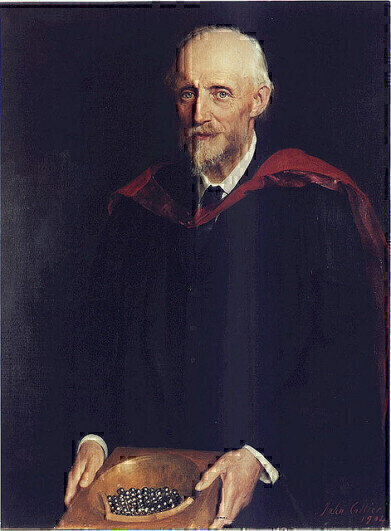News
What is the Reynolds Number Used For?
Oct 25 2014
The Reynolds number is a dimensionless number which is used to differentiate between the turbulent and laminar flow of a pattern and predict how it will flow in different fluid situations.
The idea of quantifying fluidity in such terms was first introduced in the mid-19th century by the physicist Sir George Gabriel Stokes. However, the quantity which is in widespread use today is named after the celebrated student of fluid dynamics, Osborne Reynolds (see image above), who propagated and popularised its use towards the end of the century.
How is the Reynolds Number Calculated?
The Reynolds number is determined by pitting the inertial forces and viscous forces against each other and, as a result, evaluating their importance in any given fluid situation. This will allow us to predict how the pattern will behave (in theory) when introduced into a foreign fluid situation.
The inertial forces are defined as density, velocity and length, while the viscous force is, unsurprisingly, the dynamic viscosity of the substance. By multiplying the three inertial forces together and dividing them by the viscous force, the Reynolds number can be arrived at.
Laminar and Turbulent Flow
The resulting number can then be used to determine how a pattern will behave in any given flow situation. If a substance has a Reynolds number of lower than 103, the viscous forces dominate and the flow pattern will be laminar. This means that it will occur in unbroken, parallel waves, which may or may not be uniform in their separation from each other.
The domination of the viscous forces keeps the flow occurring in regular, predictable paths with constant streamlines. This type of flow lends itself to scientific conjecture, since precise calculations and models can be evaluated from the data.
However, if the Reynolds number is more than 104, the inertial forces dominate and the flow pattern will be turbulent. This means that it will occur in spiralling eddies which double back on themselves, due to the turbulence created by the inertial forces.
Although this type of flow pattern is wildly unpredictable and has randomly fluctuating parameters, it does allow for the effective mixture of two separate liquids.
Flow Measurement in the Lab
As can be surmised from the above information, determining and evaluating flow measurement in the lab can be a difficult process – especially when dealing with turbulent flow patterns. The narrow diameter of the pipes involved and the low flow rates these inevitably produce can be problematic when attempting to achieve accurate data collection.
The article, Flow Measurement in the Laboratory, talks in detail about the various methods of flow measurement technology, including differential pressure meters, positive displacement flowmeters, conventional axial turbine flowmeters, coriolis meters and recent ultrasound technology, among others. The article also looks at the role the Reynolds number plays in each of these separate techniques and evaluates which method may be most appropriate for specific situations.
Digital Edition
Lab Asia Dec 2025
December 2025
Chromatography Articles- Cutting-edge sample preparation tools help laboratories to stay ahead of the curveMass Spectrometry & Spectroscopy Articles- Unlocking the complexity of metabolomics: Pushi...
View all digital editions
Events
Jan 21 2026 Tokyo, Japan
Jan 28 2026 Tokyo, Japan
Jan 29 2026 New Delhi, India
Feb 07 2026 Boston, MA, USA
Asia Pharma Expo/Asia Lab Expo
Feb 12 2026 Dhaka, Bangladesh



















